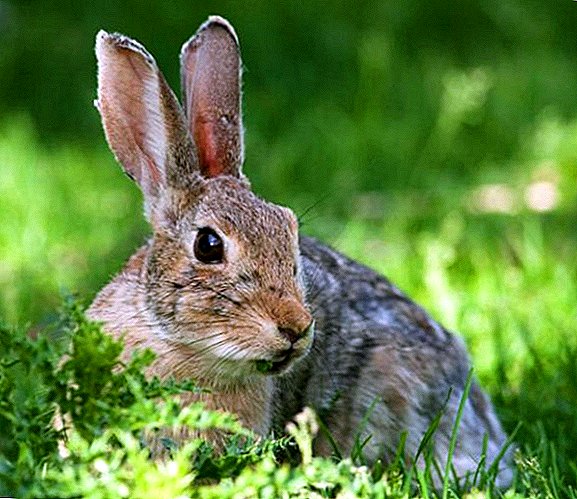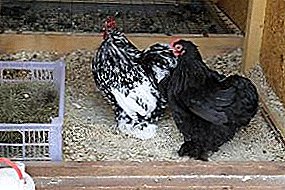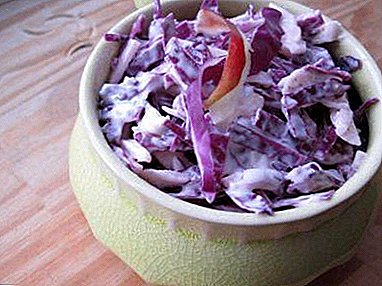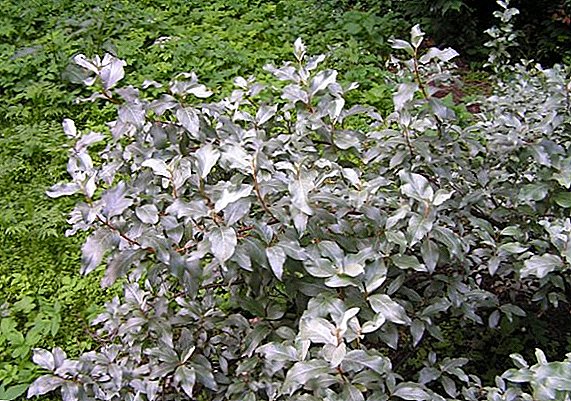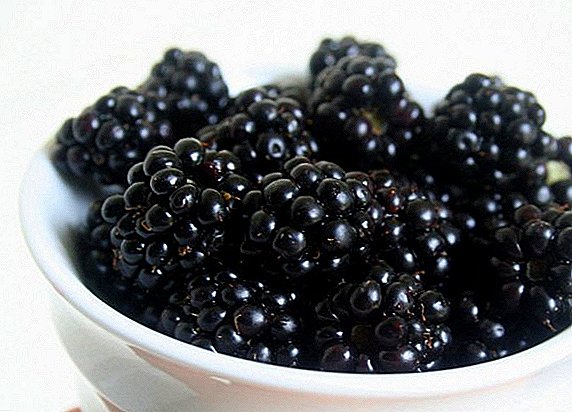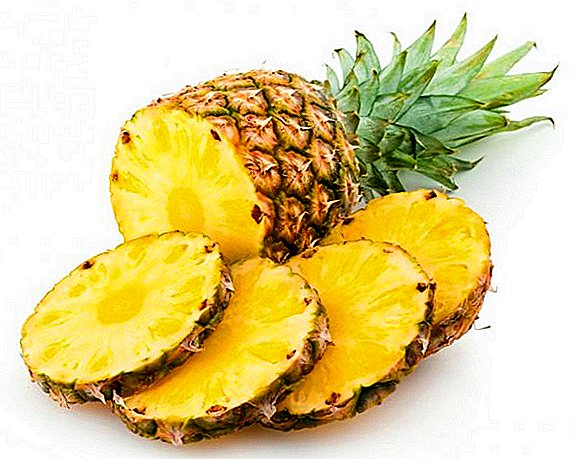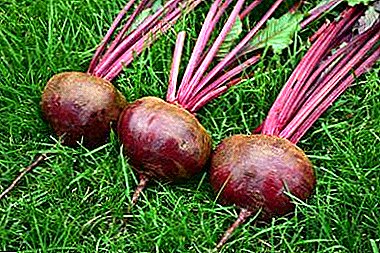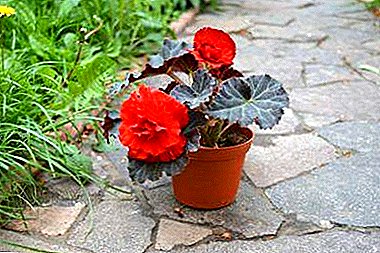
Tuberous begonia is a beautiful plant that needs a special approach to reproduction. Tuber, which is a modified shoot, in the offseason is a plant source of nutrients.
In our article we will look at how to propagate this flower using tubers, cuttings or seeds. Let's talk about the rules of care for begonia after reproduction.
We discuss possible problems that may arise during its cultivation. You can also watch a useful video on this topic.
How to propagate the plant?
How does begonia breed depending on the species? A plant with a stem can propagate by stem cuttings..
Attention: Creeping varieties of begonias and species with pubescent leaves can be propagated in parts of the leaf, flowering - sowing seeds, bush - division of rhizomes. Tuber species multiply by splitting the tuber into parts.
Reproduction at home
Let us consider in more detail how it is possible to grow a tuberous begonia flower at home. Among experienced flower growers, the most common method is reproduction by stem cuttings. For its implementation does not require effort and special knowledge. Using this method, you can diversify your personal collection of a very rare type of flower. The survival rate of begonias by cutting is very high., but the most important thing is that flowering is possible immediately after the rooting of the planting material occurs.
Read how to grow an ampelous begonia from cuttings and seeds, as well as about the rules of plant care, read here, and from this article you will learn what kind of begonia is and how to care for it.
Cuttings
This simple method is valuable in that the young flower preserves the maternal attributes of a hybrid plant. This procedure is carried out in spring or autumn.
Flower propagated by stem and apical cuttingswhich are best separated directly from the tuber. To do this:
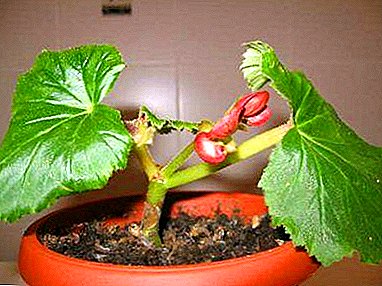 In the spring during the germination of tubers, you must carefully take a few 12-centimeter shoot. To increase the cut area, it is best to cut them at a sharp angle.
In the spring during the germination of tubers, you must carefully take a few 12-centimeter shoot. To increase the cut area, it is best to cut them at a sharp angle.- Sprinkle these places with ash or coal, leave to dry for several hours. It is advisable to treat with growth stimulants, this will help protect against infection and quickly take root.
- It is necessary to put in a soft distilled or filtered water at room temperature.
Rooting process cuttings:
- When rooting cuttings requires a special temperature - 22 ° C.
- Container with planting material should be in a well-lit place, protected from direct sunlight.
- If there is rot at the end of the stem, then it is necessary to reach the appendage and cut off the sore spot, dry it out a little and put it back again, after changing the water.
- To avoid rotting, it is recommended to use peat tablets or ready-made soil specially designed for seedlings. In him to deepen the cuttings to a depth of 2-3 cm. Top cover with a jar to create greenhouse conditions. On rooting will take 30 days.
As soon as the young roots of the tuberous begonia grow roots up to 2 centimeters in length, they are immediately recommended to be transplanted to a permanent place. The soil should be taken specially designed for these plants or to cook yourself. For this is taken in equal amounts:
- sod or leaf earth;
- humus;
- vegetable compost;
- peat;
- river sand coarse fraction.
Board: Soil after planting young plants do not need to condense. Otherwise, you can hurt the young still tender roots. Seedlings require watering.
We recommend to watch the video on the breeding of begonias cuttings:
Seeds
The seed propagation procedure occurs at the beginning of February.. Such an early planting allows you to plant full-fledged deciduous shoots. Begonia will begin to bloom in the first year. From the moment of sowing the seeds, half a year will pass, and at the end of the season small tubers will be formed that are suitable for storage in winter (how to properly save the tuberous begonia in winter, read here).
- It is best to sow the seeds in plastic containers with a lid, but you can take others, just close them with a film or a transparent lid.
- At the bottom there should be openings through which excess water will flow. Put a drainage layer, which is used as a washed pebbles or small size expanded clay.
- It is advisable to disinfect a special primer for begonias, and pour it into the container with a 2-cm layer.
- From the surface of the soil to remove everything that may prevent the seeds to ascend, namely:
- small pebbles;
- lumps;
- trash.
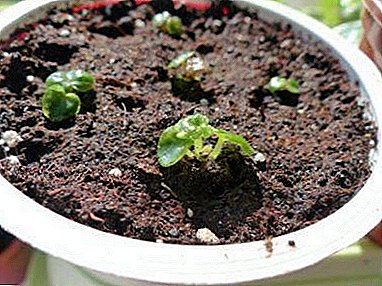 Sown on the surface of the seeds do not need to sprinkle with soil, just gently roll them.
Sown on the surface of the seeds do not need to sprinkle with soil, just gently roll them.- Then close the transparent cover. This will help create the necessary microclimate inside the container.
- The most suitable temperature for seed germination is 23-27 ° C. Having put on the lit place, it is possible to achieve the prompt emergence of shoots.
It is necessary to water gentle shoots only from a spray! It is necessary that the soil was wet, if the earth even dries out a little, then the ascended seeds will quickly die.
- After 14 days, the lid should be raised by 1-2 cm with a stand, and after a few days it should be removed altogether, and the temperature should be lowered to 18 ° C.
- Seedlings need to be protected from the direct rays of the sun. Tuberous begonia feels great on all window sills, except for the north.
In winter, seedlings need additional lighting. After the appearance of these leaves, it is necessary to make the first pick. The distance between seedlings should be 2 cm.
- After planting, moisten the soil, and as soon as the moisture on the leaves dries, the container is again covered with a lid. Approximately in a month, when the leaves of the next growing seedlings close up, a second pick is needed. Grown up seedlings can be immediately planted in separate pots.
We recommend to watch the video on the reproduction of tuberous begonia using seeds:
From sheet
The procedure for breeding begonias from the leaf will take longer than the stem. To do this, in the spring from an adult plant you need to cut a strong large leaf and put it in a glass, into which to pour a little water.
When evaporated, it is simply topped up, no need to completely change. After a leaf appears on the handle, the leaf is planted in light ground. This procedure should be performed carefully, otherwise you can destroy the immature roots.
We recommend to watch the video on the reproduction of the tuberous begonia using the sheet:
Possible problems
With different breeding methods, begonias can cause problems.:
- If a cut of the cutting began to rot in the water, then infection with fungi may have occurred. After the rotten part has been removed, the process must be placed in fresh water, in which half a tablet of activated carbon is dissolved.
- It so happens that the shoots become black. The cause is a fungal disease - gray rot, which appears when the plant is in a damp and cool room. It is required to carry out the treatment with fungicides, and create a comfortable environment indoors.
- Sometimes the seeds do not peck for a long time. It is observed at low temperature and dry ground.
- If the planted seedlings become thin and long, it means that it lacks sunlight.
- When the leaves of the plant curl and turn yellow, then most likely it is not enough moisture or hot in the room.
- If the begonia grows slowly, then it needs to be fertilized.
Further care
After breeding the flower needs proper care. One of the important conditions is the observance of the optimum temperature and humidity conditions:
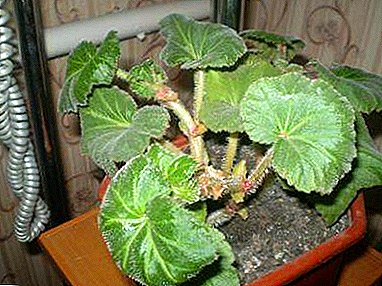 The temperature in summer is 18-22 ° С, in winter - not lower than 16 ° С;
The temperature in summer is 18-22 ° С, in winter - not lower than 16 ° С;- humidity 60% .;
- diffused sunlight.
Water the plant preferably in the morning or evening water at room temperature. Watering should be carried out after the drying of the upper layer. Begonia can not be sprayed, otherwise fungal diseases are possible.
The flower needs fertilizing with fertilizers, which contain phosphorus and potassium, especially during the flowering period (why tuber begonia does not bloom, as well as what diseases and pests can destroy the flower and how to fight them, read here) During active growth, it is necessary to feed with nitrogen.
Do not forget:
- loosen the ground;
- remove dried flowers;
- spray the air around the plant;
- clean leaves from dust;
- check for pests.
We recommend to watch the video about the care of the tuberous begonia after reproduction:
- tuberous;
- Bolivian;
- ampelous.
Conclusion
Tuberous begonias are decorative leafy and flowering. They are found in the form of grassy plants, shrubs and dwarf shrubs. Thanks to this diversity, you can always make a suitable choice for decorating your home and garden. Begonia can be multiplied by any of the existing methods.


 In the spring during the germination of tubers, you must carefully take a few 12-centimeter shoot. To increase the cut area, it is best to cut them at a sharp angle.
In the spring during the germination of tubers, you must carefully take a few 12-centimeter shoot. To increase the cut area, it is best to cut them at a sharp angle. Sown on the surface of the seeds do not need to sprinkle with soil, just gently roll them.
Sown on the surface of the seeds do not need to sprinkle with soil, just gently roll them. The temperature in summer is 18-22 ° С, in winter - not lower than 16 ° С;
The temperature in summer is 18-22 ° С, in winter - not lower than 16 ° С;